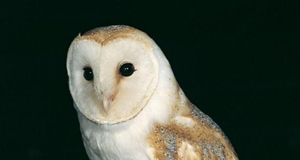![]()
Eion Burke – Kennedy
The unrestricted use of rat and mice poisons is having a catastrophic effect on Ireland’s barn owl population. A study of owl carcasses, collected over a four-year period from 2007 to 2011, showed more than 85 per cent of the birds had detectable traces of commonly available rodenticides within their systems prior to dying.

The average level of toxic exposure was also found to be four times greater than that observed in similar studies on UK barn owls. The research, carried out by Birdwatch Ireland in collaboration with University College Cork and the Centre of Ecology and Hydrology in the UK, provides the first definitive data on the pervasive impact of these substances on Irish wildlife.
Barn owls feed almost exclusively on small mammals, making them susceptible to consuming contaminated rodents. This type of “secondary poisoning” is thought to be behind a sharp fall-off in owl numbers, with recent estimates suggesting there are now only 450 pairs left in the country.
The owl research is likely to have wider implications for Ireland’s dwindling biodiversity as it may explain why several other species, which share a similar diet, are also in decline.
“We need to control rats for public health and animal hygiene.
“However, the way we go about it at the moment is causing some lethal poisonings of wildlife, especially birds of prey,” research co-ordinator and raptor conservation officer with Birdwatch Ireland, John Lusby, said.
“Ireland’s barn owl population is well below its carrying capacity despite the abundance of suitable nesting sites suggesting there are other limiting factors at play.”
The situation is compounded by a “very low diversity” of small mammal creatures here which narrows the owls’ diet, he said. In the south west of the country, the owls are faring slightly better, probably because of a greater variety of potential prey, like the bank vole and the greater white-toothed shrew, which are not generally targeted by poisons.
Traditional anticoagulant rodenticides work by preventing the blood from clotting, thinning it until the animal that ingests the poison eventually dies from internal bleeding. While the mechanism is the same in more modern pest-control products, the compounds are considerably more toxic and pose a greater threat to non-target wildlife.
Poisoned barn owls either die slowly if they consume a big enough dose, or survive and carry a residue of poison in their bodies. It’s unclear what the affects of a non-lethal dose is on barn owls. However, there is concern it may be affecting the bird’s hunting efficiency and/or its breeding success, similar to how the now-banned DDT pesticide almost wiped out Europe’s peregrine falcon population.
A Campaign for Responsible Rodenticide Use (CRRU), involving stakeholders from the conservation side and representatives from the rodenticide industry, will be launched at the Ploughing Championships in Co Laois later this month, and details of the CRRU code can be found on the thinkwildlife.org website.
“It is necessary to use rat poisons in certain circumstances but by implementing small changes to the way we use these substances we can significantly reduce the threat to non–target species,” Mr Lusby said.
The barn owl study was part funded by the National Parks and Wildlife Service, the Department of Agriculture and The Heritage Council.
Source: The Irish Times – Rat and Mouse Poisons Devastating Irish Barn Owl




